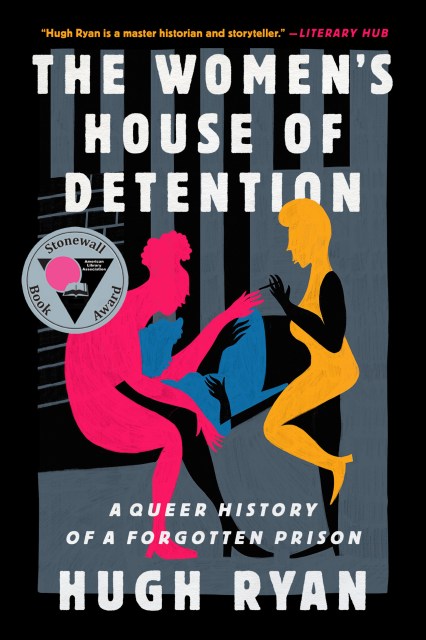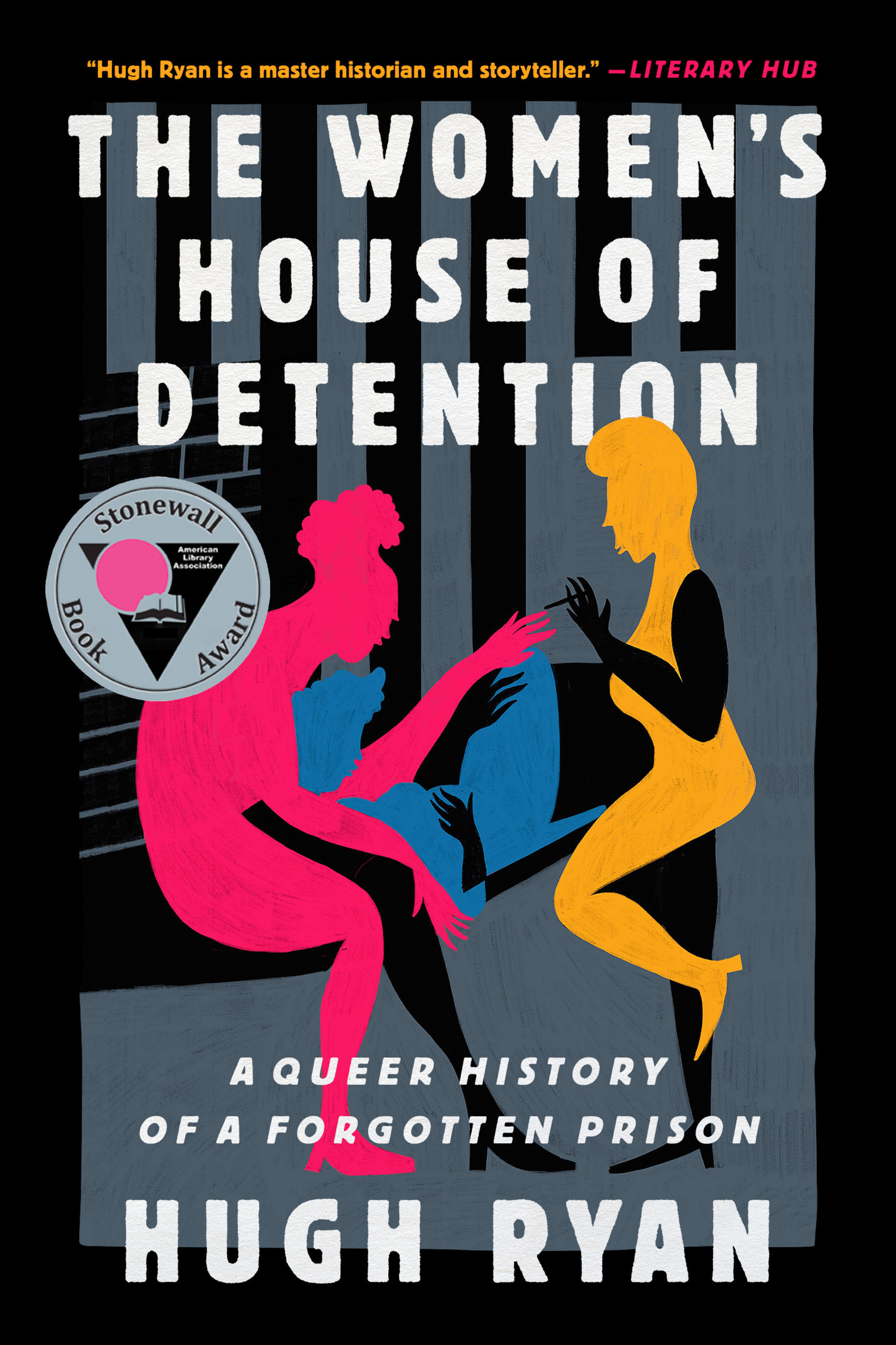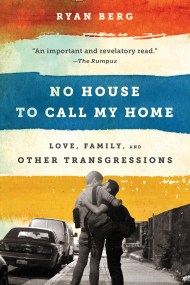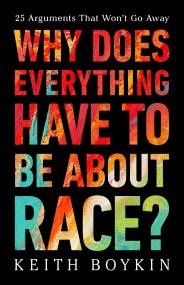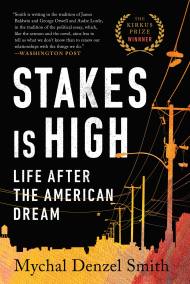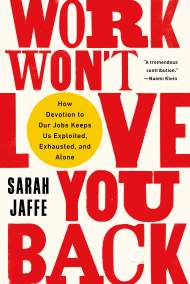Promotion
Use code MOM24 for 20% off site wide + free shipping over $45
The Women's House of Detention
A Queer History of a Forgotten Prison
Contributors
By Hugh Ryan
Formats and Prices
Price
$11.99Price
$15.99 CADFormat
Format:
- ebook $11.99 $15.99 CAD
- Hardcover $30.00 $38.00 CAD
- Audiobook Download (Unabridged) $31.99
- Trade Paperback $19.99 $24.99 CAD
This item is a preorder. Your payment method will be charged immediately, and the product is expected to ship on or around May 10, 2022. This date is subject to change due to shipping delays beyond our control.
Also available from:
This singular history of a prison, and the queer women and trans people held there, is a window into the policing of queerness and radical politics in the twentieth century.
The Women’s House of Detention, a landmark that ushered in the modern era of women’s imprisonment, is now largely forgotten. But when it stood in New York City’s Greenwich Village, from 1929 to 1974, it was a nexus for the tens of thousands of women, transgender men, and gender-nonconforming people who inhabited its crowded cells. Some of these inmates—Angela Davis, Andrea Dworkin, Afeni Shakur—were famous, but the vast majority were incarcerated for the crimes of being poor and improperly feminine. Today, approximately 40 percent of the people in women’s prisons identify as queer; in earlier decades, that percentage was almost certainly higher.
Historian Hugh Ryan explores the roots of this crisis and reconstructs the little-known lives of incarcerated New Yorkers, making a uniquely queer case for prison abolition—and demonstrating that by queering the Village, the House of D helped defined queerness for the rest of America. From the lesbian communities forged through the Women’s House of Detention to the turbulent prison riots that presaged Stonewall, this is the story of one building and much more: the people it caged, the neighborhood it changed, and the resistance it inspired.
Winner, 2023 Stonewall Book Award—Israel Fishman Non-Fiction Book Award
CrimeReads, Best True Crime Books of the Year
Genre:
-
“The building becomes a literary device, a vehicle for the recovered stories of its incarcerated as well as another affirmative point in the broader argument for prison abolition.”Vulture
-
“By using queer history as a framework, Ryan makes the case for prison abolition stronger than ever. Part history text, part call to activism, this book is compelling from start to finish.”Buzzfeed
-
“In this essential, abolitionist work, historian and author of When Brooklyn Was Queer Hugh Ryan uncovers the stories of this bewildering place and of the people who populated it.”Electric Literature
-
“Hugh Ryan’s crucial new book will change how you think about LGBTQ+ history…the most thorough collection of pre-Stonewall queer lives I’ve ever read.”The Advocate
-
“[A] thoroughly researched archival treasure.”them.
-
“In his deeply researched and illuminating book, Ryan tells the history of the prison not only through personal stories but also the social and political shifts during the 20th century.”CrimeReads
-
“A truly radical, moral, and exciting history that will blow your mind. Ryan argues that it was the creation of a women’s prison in the West Village that helped center lesbian life in that area. Since lesbians are poorer (no men’s incomes), de-facto marginalized, and more often deprived of family support, lesbians and queer women and trans men have also been overrepresented in prisons. Using records documenting poor, white, Black, and Latina women incarcerated for criminalized lives, Ryan shows us the profound injustices of prisons themselves, and how lesbians have been demeaned and yet tried to survive. A game changer from a community-based historian.”Sarah Schulman, author of Let the Record Show: A Political History of ACT UP New York, 1987–1993
-
“Expertly mining prison records and other source materials, Ryan brings these marginalized women to vivid life. This informative, empathetic narrative is a vital contribution to LGBTQ history.”Publishers Weekly
-
“A fascinating, lively, and devastating story reverberates in the pages of The Women’s House of Detention. Hugh Ryan reveals the vital realities of people confined to the margins, whether behind the walls of the notorious House of D in the heart of the Village in Manhattan, or at the edges of complex communities in the tumult of twentieth-century New York City. Ryan’s engrossing and rigorous history of one jail documents an intersection of gender politics, evolving queer identity, and brutal racial repression, and is essential reading in a nation that now incarcerates 30 percent of the world’s women prisoners.”Piper Kerman, author of Orange Is the New Black: My Year in a Women’s Prison
-
"Hugh Ryan is one of the most important historians of American life working today. The Women's House of Detention resets so many assumptions about American history, reminding us that the home of the free has always been predicated on the imprisonment of the vulnerable. Of vital importance to those interested in criminal justice reform, prison abolition, gender history, the history of sexuality and the history of poverty, as well as anyone who declares themselves knowledgeable about New York City history, this account does what history is supposed to—looking to the past to understand our broken present and possibly help us plan for a better future."Kaitlyn Greenidge, author of Libertie
-
“Part history, part horror story, and part blistering critique of the country’s ‘criminal legal system’.”Kirkus Reviews
-
“Ryan has created a valuable new lens for queer and carceral history.”Booklist
-
“While this book is ostensibly about the New York City Women’s House of Detention, Greenwich Village’s forgotten queer landmark, it is also about so much more. Ryan contextualizes the notorious prison in the realms of criminology, queer theory, women’s history, geography, and many other disciplines… This blend of queer history and social history is highly recommended.”Library Journal
-
“A rigorously researched and compellingly told piece of queer history that features a memorable cast of heroic characters. Ryan squarely places his subject in the context of our contemporary society to illustrate the ugly and longstanding enactment of homo/transphobic terrorism by the carceral state.”Melissa Febos, author of Girlhood and Body Work: The Radical Power of Personal Narrative
-
"Ryan dives into the archives created by those incarcerated in the House of D and the people who put them there, giving us the gift of rich context for these stories and countless hidden queer histories. Placing the prison in a quintessential queer community, The Women's House of Detention illuminates prisons as queer spaces and queer resistance through acts of autonomy, care, and collectivity, offering queer abolitionist organizers working to close jails and prisons across the country a glimpse into the long legacy they are living—and the inspiration to keep fighting until there are no more houses of detention."Andrea Ritchie, co-author of Queer (In)Justice: The Criminalization of LGBT People in the United States
-
“Hugh Ryan has gifted us with a magnificent queer history of the notorious Women’s House of Detention in New York’s Greenwich Village that spans almost fifty years. With an astonishing gift for digging into archives, using their own letters and voices as much as he can, Ryan illuminates those whose lives were deemed ‘irredeemable.’ Stories that resonate with the humanity, resourcefulness, and loving of imprisoned Black, Puerto Rican, and working-class women are combined with those of political prisoners like Claudia Jones, Elizabeth Gurley Flynn, Angela Davis, Andrea Dworkin, Afeni Shakur, and Joan Bird. This meticulous work shines like a lighthouse beacon on a fog-shrouded shore. A brilliant achievement.”Bettina Aptheker, distinguished professor emerita of feminist studies, University of California, Santa Cruz
-
“In the 1950s and 1960s, I lived my femme lesbian life in the shadow of the Women’s House of D. In the bar that was home to me, parties were held to greet released lovers or to mourn new incarcerations. The Women’s House of Detention was the horizon of my early lesbian queer life; I have carried the voices of the separated lovers I heard in those hot summer streets all my years. In 1971, the building was erased from its Village corner, but Hugh Ryan refuses that erasure. These pages are thick with women and transmasculine people stepping back into our communal history, our national history. In this portrait of one prison’s life we can see the nation we have become and why, where mass incarcerations of Black, Brown, and poor people have taken genocidal proportions. Ryan uses new archival sources to emphasize the prison’s role in punishing nonconforming expressions of gender and love. Read this and you too will hear the lost voices reminding us both of their vitality, and of the work that still must be done. A needed, needed history.”Joan Nestle, author and founder of the Lesbian Herstory Archives
-
“[A] fascinating book written with style and passion and deserves the widest possible readership.”New York Journal of Books
-
“A can’t-put-down exploration of a link between prison abolition and queer liberation.”The Stranger
-
“This is one of those books that you want to talk about with every single person after reading it. Hugh Ryan is a master historian and storyteller, and this book feels like his strongest work yet! The Women’s House of Detention spotlights a long forgotten, yet significant part of queer history…it not only explains and examines this piece of history, but compels us to never forget it again.”LitHub
-
“Ryan brings this queer carceral history to life, illuminating not only the lives that might otherwise have been lost to us, but also a simultaneous vision of the horrific nature of our criminal justice system and an empowering story of queer survival and community that is urgent at a time when our country and culture appear poised to crush the rights people of color, women, and queers have struggled for centuries to ensure.”Los Angeles Review of Books
-
“I was shocked to not be familiar with this institution that is so deeply tied to queer persecution and liberation in New York City. It was eye-opening, and rage-inducing, and I'm so glad I got to read it.”Ashley C. Ford
-
“Hugh’s book is proof you can raze a prison, but you cannot erase the voices of its people.”BOMB Magazine
-
“[A]n abolitionist read that uncovers dark truths behind bars and walls.”Bookstr
-
“This text — either in its entirety or as individual chapters — would enrich any queer or feminist course.”RGWS: A Feminist Review
- On Sale
- May 10, 2022
- Page Count
- 368 pages
- Publisher
- Bold Type Books
- ISBN-13
- 9781645036647
Newsletter Signup
By clicking ‘Sign Up,’ I acknowledge that I have read and agree to Hachette Book Group’s Privacy Policy and Terms of Use
